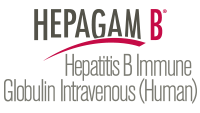HepaGam B® [Hepatitis B® Immune Globulin Intravenous (Human)] is FDA-approved for post-exposure prophylaxis1
HepaGam B® is indicated for post-exposure |
Acute exposure to blood containing HBsAg |
Perinatal exposure of infants born to HBsAg-positive mothers |
Sexual exposure to HBsAg-positive persons |
|
Household exposure to persons with acute HBV infection
|
HepaGam B® Dosing Regimen for Post-exposure Prophylaxis (Intramuscular)
Indication |
Dosing |
Instructions |
Acute Exposure to Blood Containing HBsAg |
0.06 mL/kg |
Administer HepaGam B® as soon as possible after exposure. The value after seven days following exposure is unclear. |
For persons who refuse Hepatitis B vaccine or who are known non-responders to vaccine, give a second dose of HepaGam® one month after the first dose. |
||
Perinatal Exposure of Infants Born to HBsAg-Positive Mothers |
0.5 mL |
Administer after physiologic stabilization of the infant and preferably within twelve hours of birth. Administer concurrently with Hepatitis B vaccine. |
Sexual Exposure to HBsAg-Positive Persons |
0.06 mL/kg |
Administer HepaGam B® and Hepatitis B Vaccine series within 14 days of sexual contact or if sexual contact with the infected person will continue. |
Household Exposure to Person with Acute HBV Infection |
0.5 mL |
For infants less than twelve months of age administered concurrently with Hepatitis B Vaccine. Prophylaxis of other household contacts of persons with acute HBV infection is not indicated unless there is an identifiable blood exposure to the index patient, such as by sharing toothbrushes or razors. Treat such exposures like sexual exposures. |

